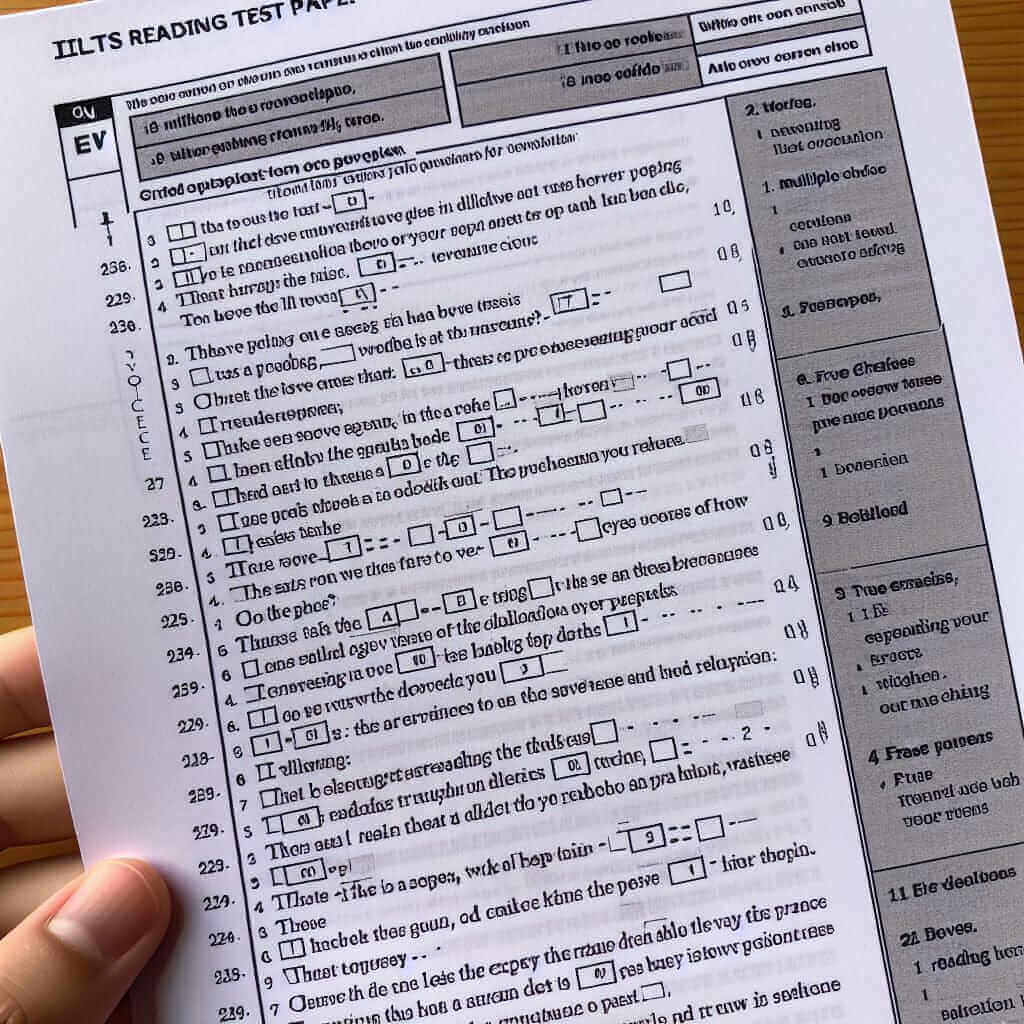The IELTS Reading test is a critical component of the IELTS exam, designed to assess a candidate’s reading skills through a variety of texts and questions. Understanding the different sections and types of questions is vital for performing well. This article will thoroughly explore the IELTS Reading test sections, provide detailed examples, and offer practical tips for preparation.
Understanding the IELTS Reading Test Sections
The IELTS Reading test is divided into three sections, each with a unique focus and set of passages. These sections test your ability to understand and analyze various types of texts.
Section 1: Social Survival
This section focuses on everyday topics and contexts. It typically contains two or three short texts related to basic social survival, such as advertisements, timetables, or notices.
Examples:
- A bus schedule that you need to interpret to answer questions about travel times.
- An advertisement for a job that requires you to identify specific qualifications needed.
- Notices about events or warnings that test your ability to locate and understand key information quickly.
Section 2: Workplace Survival
This section deals with work-related topics. It often includes passages related to training materials, company policies, or employee manuals.
Examples:
- A company policy on health and safety measures that you need to summarize.
- Training guidelines for new employees, requiring you to identify key procedures.
- An internal memo about changes in workplace protocol that tests your understanding of specific details.
Section 3: Academic Reading
The third section is the most challenging, featuring longer and more complex texts. These passages are often academic in nature and require a higher level of comprehension and analytical skills.
Examples:
- An extract from a textbook on climate change that requires deep understanding and inference.
- A scholarly article on social psychology where you need to identify the author’s main argument and supporting evidence.
- A detailed report on technological advancements that includes multiple points of view and requires critical evaluation.

Applying Knowledge to IELTS Real-Life Scenarios
It’s essential to practice with real IELTS materials to familiarize yourself with the format and types of questions you’ll encounter. Here are some practical examples from actual IELTS materials:
Example 1: Multiple Choice Questions
Passage:
A timetable for a city’s bus routes.
Question:
Which bus will get you to City Centre by 9 AM on a weekday?
Strategy:
Scan the timetable for routes arriving by 9 AM, ensuring you double-check the weekday schedule.
Example 2: True/False/Not Given Questions
Passage:
A job advertisement requiring specific qualifications.
Statement:
The ideal candidate must have a master’s degree.
Strategy:
Locate the section of the passage mentioning qualifications and determine if this statement is clearly mentioned, inferred, or not present.
Example 3: Summary Completion
Passage:
A company health and safety policy.
Summary:
The policy emphasizes the importance of wearing [blank] in the warehouse to prevent accidents.
Strategy:
Identify the key points in the passage regarding safety measures and match them to the summary to fill in the blank correctly.
Avoiding Common Mistakes
-
Misinterpreting Instructions:
Always read the instructions carefully. For example, if a question asks you to write “NO MORE THAN TWO WORDS,” exceeding this limit will result in a wrong answer. -
Overlooking Key Information:
Skimming too quickly can cause you to miss vital information. Practice finding a balance between skimming and scanning to extract essential details accurately. -
Mismanaging Time:
Spend no more than 20 minutes on each section to ensure you have enough time to complete the entire test without rushing.
Best Practices for Preparation
-
Regular Practice:
Use authentic IELTS practice materials to get accustomed to the types of texts and questions. -
Build Vocabulary:
Expanding your vocabulary will help you understand more complex texts and improve your ability to infer meaning from context. -
Timed Practice:
Simulate test conditions by timing your practice sessions to enhance your time management skills. -
Review Mistakes:
Carefully review any mistakes to understand where you went wrong and how to avoid similar errors in the future.
Conclusion
Understanding the IELTS Reading test sections, practicing with real materials, and employing effective strategies are key to achieving a high score. By focusing on social survival, workplace survival, and academic reading texts, you can comprehensively prepare for the challenges you will face. Keep practicing, stay focused, and remember to manage your time effectively during the test. Good luck!
Feel free to leave any comments or questions below, and explore more resources on our website to continue your IELTS preparation journey.